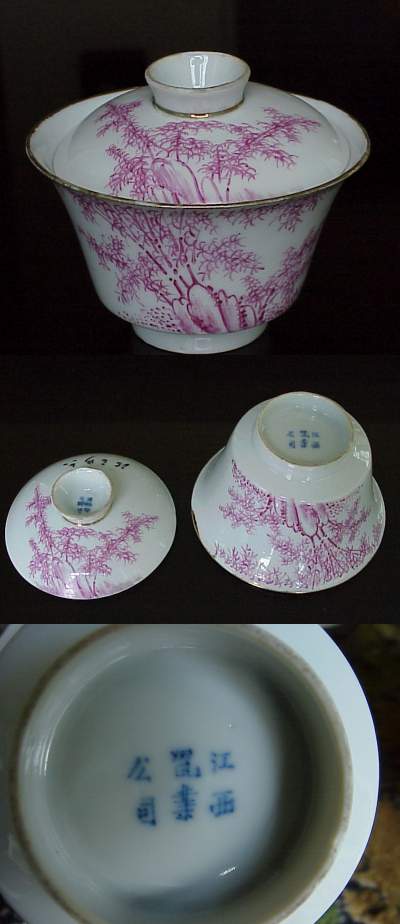
This page is only one of many thousands of Gotheborg.com Help and Information Pages, offering specialized knowledge on Chinese and Japanese Porcelain, including a Glossary, Q&A, Chinese and Japanese Porcelain Marks, Chinese Porcelain Exhibition and Excavation reports etc. For personal help and far more information, join our Discussion Board or use 'Ask a Question' for quick email consultations. For full text and better navigation, use a full-screen device rather than a mobile phone, that offers only limited content.

When I first saw the mark #158 in the section on 20th century Chinese porcelain marks, I thought I recognized the mark. I enclose here pictures of the teacup I was thinking of.
The mark is not exactly the same. The most obvious difference, is that this mark is hand painted, but I still think there is a close relation between them.
This mark reads: Jiangxi Ci Ye Gong Si (Jiangxi Porcelain company).
The Jiangxi Porcelain Company was established in 1910 as a large semi government company funded by private owners and the five provinces of Hebei, Hubei, Jiangsu, Anhui and Jiangxi.
It was located near the Zhushan - the Pearl Hill - adjacent to the former Imperial porcelain factory, with an initial capital of 200,000 Yuan.
The company used traditional styles and methods and their porcelain did not differ greatly from those of the late Qing.
Possibly there were bowls and dishes made, and painted with dragons on a yellow ground, which were Imperial wares ordered by the government.
Soon after, the company established a ceramics school at Gaomen in Poyang, Raozhou, where experiments and improvements were achieved. I believed this school was the source and training home of many fencai masters we can see later between 1930 to 1950.
Regarding a date almost all Hong Kong dealers and shop owners would say "early Republic of China " for this bowl and cover, this is to say between 1910-1940s. The Jiangxi Porcelain Company seems to have ceased their business around 1930.
Simon Ng
City University of Hong Kong